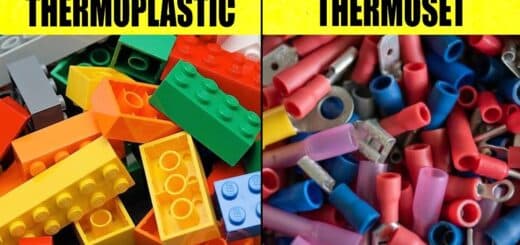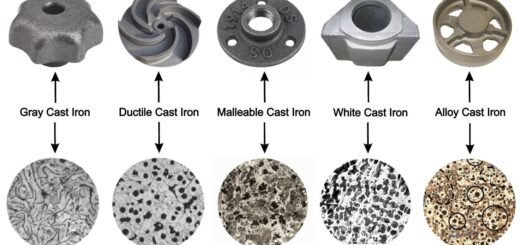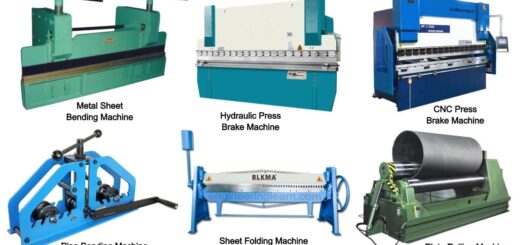Dip Brazing: Definition, Design, Process, Benefits & Materials [Complete Details]
![Dip Brazing: Definition, Design, Process, Benefits & Materials [Complete Details]](https://engineeringlearn.com/wp-content/uploads/2023/03/Dip-Brazing-1024x539.jpg)
Dip Brazing Introduction:
Dip Brazing: Definition, Design, Process, Benefits & Materials [Complete Details]: – Brazing can be achieved utilizing various techniques, each useful for addressing specific design goals or materials qualities. Aluminum dip brazing is a well-known procedure. Compared with different methodologies, it tends to be somewhat reasonable and brings about clean parts with minimal work in the wake of brazing is finished.
What is Brazing?
In brazing, a filler metal joins the end of two pieces of metal. The two pieces come near one another so the filler can separate them. Then, at that point, capillary action causes the filler to flow into the gap between the two pieces of metal. Commonly, a low-melting point filler is utilized on the grounds that the filler needs to melt. This implies the pieces of metal being joined remain intact through the brazing process.
The filler metal is normally an alloy of metals that bonds to both of the metals being joined. A chemical called flux helps the filler metal flow through the gap between the two bits of metal. The flux likewise keeps the metals clean and eliminates things like oxides so a good seal forms between the metals.
What is Dip Brazing?
Dip brazing is a brazing process that permits simultaneous brazing or joining of at least two base metals and utilizes flux and the filler metal. While the brazing assembly is dipped in the hot salt bath, the flux melts and dissolves in the salt bath and permits the filler metal to soften and fill the joint by capillary action. The filler metal, after cooling to the solid state, forms a strong metallic bond all through the joined area.
The parts to be brazed subsequent to being chemically cleaned, are assembled with the filler metal preplaced as near the joints as could be expected. The assembly is then preheated in an air furnace to 1,025°F to safeguard the uniform temperature of divergent masses in the assembly. The part is then submerged in a molten salt bath. These salts are actually aluminum brazing flux. The bath is maintained at 1,095°F±5°F in a salt bath furnace. As the assembly is drenched or dipped, the molten flux interacts with all inner and outside surfaces simultaneously. This liquid heat is very quick and uniform.
Since the bath is a flux, complete bonding on oxide-free surfaces guarantees unusually top-notch joints. The time of immersion is determined by the mass to be heated however is sometimes more than two minutes in duration.
How to Design for Dip Brazing?
A. Select Correct Alloy
Utilize only alloys suggested for dip brazing as other alloys will generally break down at brazing temperatures.
B. Avoid Fixtures If Possible
Design parts to be self-jigging at every possible opportunity. Spot welding, heli-circular tack welding, and pinning frequently act as great substitutes of self-jigging designs. Fixtures can be utilized, yet their design is of basic significance.
C. Use Lap Joints for Best Results
Design brazed assemblies for lap joints for best outcomes. Butt joints have been made to foster strength equivalent to the base metal yet conditions should be particularly reasonable. To accomplish maximum proficiency in lap joints the overlap ought to be about two times the thickness of the thinnest part.
D. Allow Suitable Joint Clearance
Joint clearance is represented by the way that capillary action causes the filler metal to be brought into the joint area. Subsequently, the proper fit should be controlled to permit good flow and uniform quality joints. For dip brazing, .001 to .010 clearance is viewed as an overall tolerance range.
E. Provide Proper Placement for Filler Metal
Prepositioning of the filler metal quickly adjacent to the joint must be provided for in the joint design. Utilization of wire rings, stamped washers, specially formed rods, strips, or paste can be used to suit the kind of joint selected. At the point when no practical means of replacing the filler metal is accessible, like in heat exchangers or other multi-joint applications, brazing sheet can be utilized to great advantage and is frequently utilized for its economic advantage alone. This material is accessible in a sheet with the filler metal clad on one or two sides.
F. Consider Filling and Draining Of Interiors
Remember that a way should be provided for the flux to flow into and drain out of the brazed assembly. At least two openings in good drain positions will normally do the trick for this reason.
What is Dip Brazing Process?
1. Assembly Preparation
It is important to eliminate grease, oxides, and scale to ensure that the alloy wets the outer layer of the components parts.
2. Application of Flux
Apply flux by spraying, plunging, or brushing the components previously, during, or after the assembly. Stop-off bases having graphite bases are utilized to forestall the flow of brazing metal into undesirable places like tapped holes.
3. Brazing Filler Metal
Different Brazing metals as wire, washers, shims, sheets, and past, are accessible and need to contact all metals being joined.
4. Fixturing
With brazing, you can invest as much effort as can fit into the furnace, so fixtures utilizing rods, hooks, or baskets are preferred.
5. Preheat
Heat up the parts to simply below the filter metal’s melting point so that time in the furnace is diminished to a minimum permitting more work to be dealt with. Heating components this way additionally permits uniform heating of different thicknesses of metal while keeping up with minimal distortion.
6. Brazing
Eliminate from pre-heat and immerse in Dip Brazing furnace for 30 seconds to 3 mins. Brazing alloy flows through the joint by capillary activity.
7. Quench
Frequently, parts should be air-cooled to a lower temperature, prior to quenching, to forestall distortion.
8. Cleaning
Flux should be taken out from the parts in the wake of quenching is completed by chemical or synthetic cleaning.
What are things you should be Aware of about the Dip Brazing Process?
A) Dip Brazing Isn’t the Only Kind of Brazing
Ancient metal smiths, at last, refined the process into an early form of brazing to make valuable metal objects like cups. Antiquated methods were not really equivalent to those we have today. In a few years back, the related processes of open-air brazing, furnace brazing, and vacuum brazing became far and wide. Dip brazing came during the latter part of the twentieth century. Dip brazing is particularly famous for joining small aluminum parts.
B) Dip Brazing Requires Very Controlled Conditions
It’s a benefit of the dip brazing process that it’s most ideal for small, details assemblies. An assembly is the final product of the different pieces being joined. Dip brazing permits more prominent consideration regarding the details of these complicated items. Indeed, even the smallest, generally difficult-to-reach joints in an assembly can be accomplished with dip brazing.
C) Brazing Joins Metals, But It’s Not Welding of Soldering
Soldering is done at temperatures beneath 450º C (842º F), though brazing requires a temperature somewhere in the range of 620°C and 870°C (1150°F to 1600°F). However, neither soldering nor brazing requires melting the base metals.
Welding, which dissolves the base metals being joined, requires temperatures higher than those of soldering or brazing. A weld is a solid bond as solid as the joined metals themselves.
D) Conditions Needed for Dip Brazing
For Dip brazing, you want a decent estimated, heat-resistant immersion tank for a bath in molten salt. Obviously, you need the metal alloy shim and perhaps an air furnace to cool the scorching hot parts after they’re removed from the salt bath.
Benefits of Dip Brazing
Below are some of the benefits of Dip brazing:-
1. Low Tooling Cost
The dip brazing process utilizes almost no special tooling hardware or equipment. Utilizing normal fixtures takes into consideration cheap configuration changes.
2. Less Possibility of Product Distortion
Dip brazing heat metals consistently take into consideration less risk of distortion contrasted with welding.
3. Higher Quality at a Lower Cost
The prevalent consequences of dip brazing are accomplished through a cost-effective process that permits many parts to be brazed simultaneously.
4. Further Developed Strength
Aluminum dip brazing makes durable, sealed, EMI-shielded joints.
5. Uniform and Convenient
Since all joints of a component can be brazed at the same time, the process produces components rapidly and equally.
6. Superior Conductivity
Aluminum dip brazing creates joints with better conductivity contrasted with adhesive or mechanically attached assemblies.
What Metals can be Dip Brazed?
Aluminum is very well-suited for dip brazing and gives good quality outcomes. The dip brazing process can in like manner be used for steel, copper, metal, and bronze, and the filler metal can be an alloy of silver, phosphorous, and copper.
Dip brazing and aluminum are a decent pair. The aluminum antennas seen on rooftops or at a facility of high innovation communication are complicated and of high accuracy, and they are made from the dip brazing process. Aluminum dip brazing has applications like antennas, airplane parts, chassis, and so forth.
Why Dip Brazing and Aluminum Are a Good Pairing?
Aluminum is a lightweight yet tough metal that resists corrosion. These properties make it an amazing material for antennas. Antennas are useless in the event that they break down under their own weight, so the more aluminum comprising them, the better.
While fabricating with aluminum, brazing is preferred over welding in light of the fact that the heat of the standard welding process, even spot welding, causes the aluminum to wrap or distort. The brazing temperature is sufficiently hot to make an enduring bond. The dip brazing aluminum process is one in which a material found a well-suited manufacturing innovation, and the technology found its optimal substance.
Conclusion
Dip brazing works with the joining or brazing of a few parts or pieces in an ideal way simultaneously. You can accomplish brazing of even the small and hard-to-reach joints of an assembly by adopting a dip brazing process. Dip brazing is a particular type of brazing and has applications in the clinical, aeronautic industry, military-related ventures, and so forth. A few disadvantages to brazing are that these joints don’t do well in high-temperature settings since the filler has a lower melting point. What’s more, the flux material might contain harmful components.
Content Source: – dipbraze, rantecantennas, ajaxelectric
Image Source: – georgeindustries













